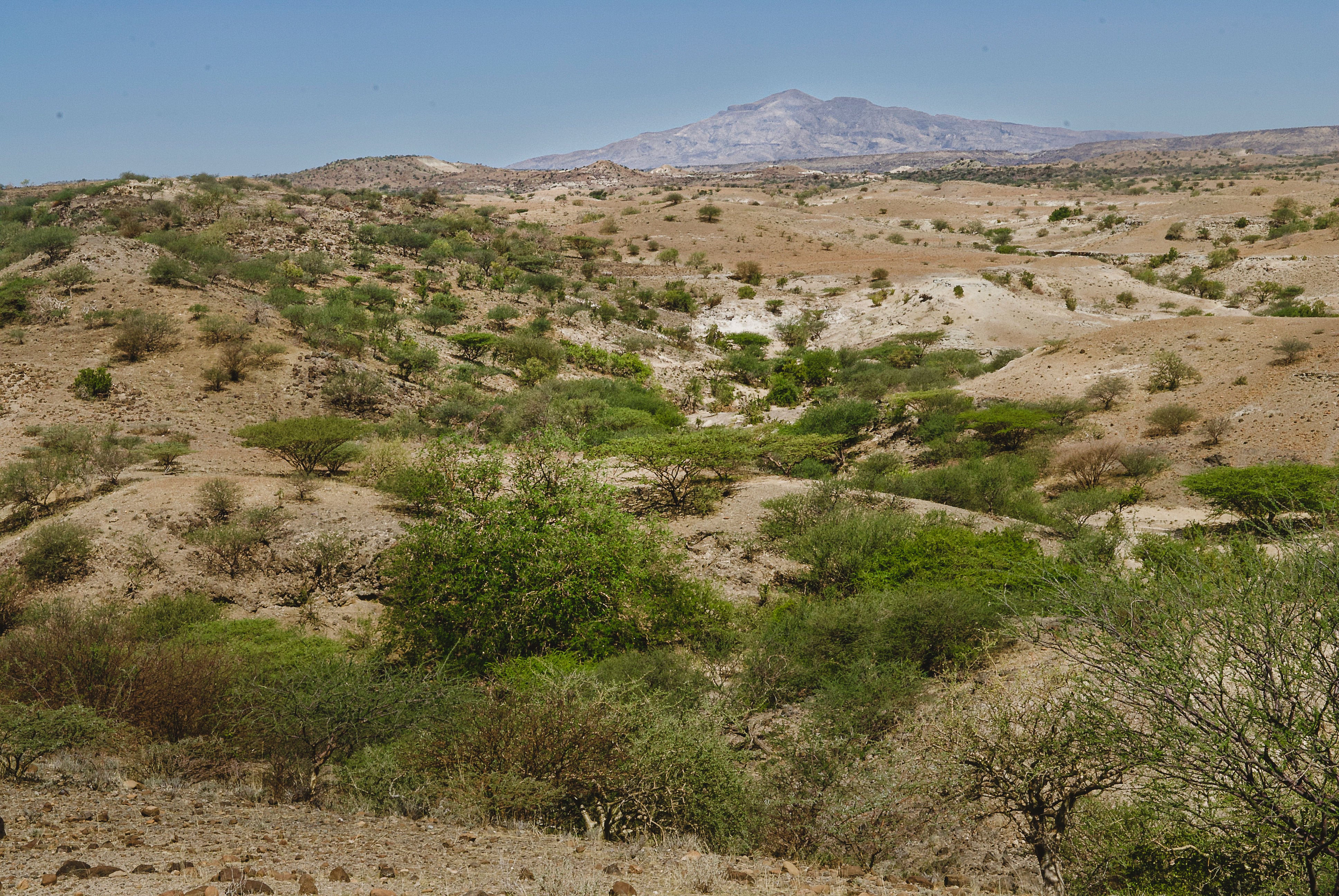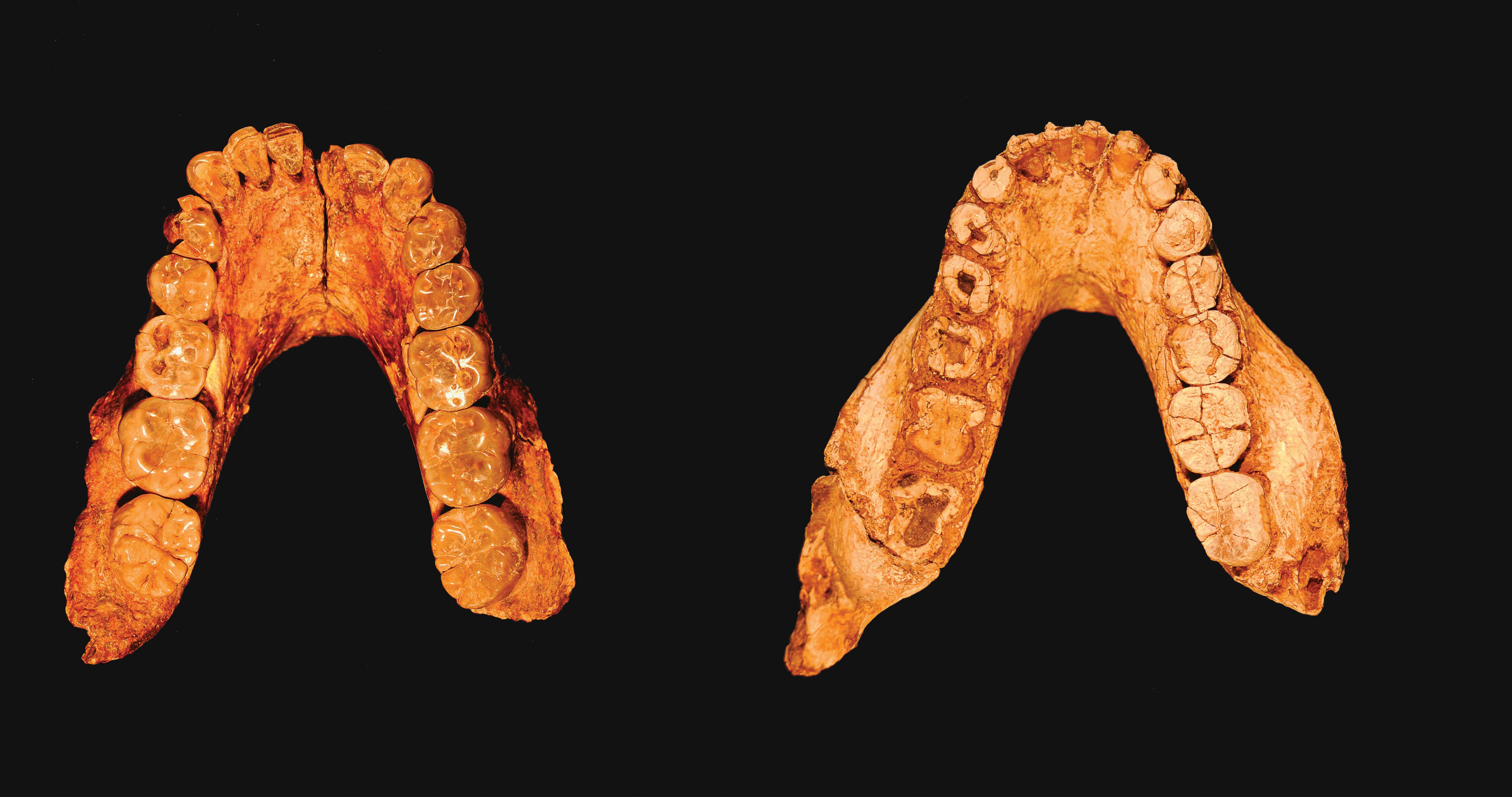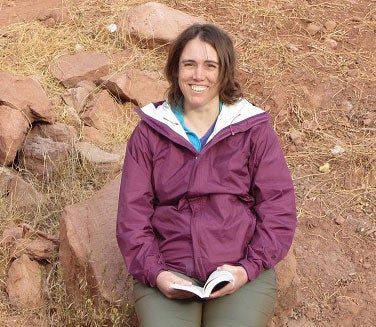lens
Uncovering Habitats of Pre-Human Ancestors
Researchers seek to understand how environments shaped evolution
 PHOTO: Courtesy of Beverly Saylor
PHOTO: Courtesy of Beverly SaylorCWRU’s Beverly Saylor is leading a research collaboration to investigate how the different landscapes and geologic features of two areas in Ethiopia might have helped shape the diversity of pre-human species. Woranso-Mille is believed to have had more varied topography and habitats than Hadar. But today’s landforms are not the same as the ancient ones. "We have to reconstruct, or puzzle out, what the ancient landscape was from evidence preserved in the sediments," Saylor said.
A Case Western Reserve researcher is leading an international team to understand the lives and environments of prehuman ancestors at an unprecedented level of detail—one that could reveal new information about evolution.
The 30 scientists are focusing their interdisciplinary expertise in the Afar region of Ethiopia to reconstruct a picture of landscapes and habitats from more than 3 million years ago and how they shaped the diversity of pre-human species.
“This collaboration—and the advanced techniques and technology involved—provides an extraordinary opportunity to advance our understanding of our collective history as humans on this planet,” said Beverly Saylor, PhD, the project’s principal investigator and an Armington Professor at the university. She specializes in interpreting sedimentary records to reconstruct a picture of past environments and has collaborated on groundbreaking fossil discoveries.
The three—year project is funded by a $1.2 million grant from the W. M. Keck Foundation. It focuses on two areas—Hadar and Woranso-Mille—and builds on decades of field studies and laboratory analyses by investigators of the two areas who will work together for the first time.
Discoveries in the last dozen years upended understandings of human evolution and inspired the project. Hadar is well known for the 1974 discovery of Lucy, a 3.2-million-year-old partial skeleton, by researchers then at CWRU and the Cleveland Museum of Natural History (CMNH).
 Photo: Courtesy of Johannes Haile-Selassie
Photo: Courtesy of Johannes Haile-SelassieThe Australopithecus afarensis fossil is from Hadar, Ethiopia, and its species has been considered the most likely ancestor to the genus Homo. But the Australopithecus deyiremeda fossil, right, discovered more recently at Woranso-Mille, had smaller teeth and likely a shorter muzzle, characteristics usually associated with Homo. The newer finds have led to questions about who Homo’s ancestor actually was.
Lucy’s species is the only hominin* from its time found at Hadar and has been considered the most likely ancestor to the human genus. But then came major discoveries of fossils from at least three hominin species—including Lucy’s—in Woranso-Mille, a newer research area 30 miles from Hadar.
Paleoanthropologist Yohannes Haile-Selassie, PhD, previously with CWRU and CMNH, directs the Woranso-Mille project, which Saylor has collaborated on since its 2004 start. He’s also a key player on the new work. Earlier this year he became director of the Institute of Human Origins at Arizona State University.
Why have multiple potential human ancestor species been discovered at one site but not the other? Researchers hypothesize Woranso-Mille had more varied topography, landscapes and habitats than Hadar that enabled more diverse mammals, including hominins, to live together.
 Photo: COURTESY OF DARIN CROFT
Photo: COURTESY OF DARIN CROFTBeverly Saylor
Relying on cutting-edge technologies. Saylor said she’s working with her CWRU colleague Jeffrey Yarus, PhD, a research professor in engineering, to bring geospatial modeling to early hominin studies for the first time. They’re seeking to catalog the variations within landscapes to understand differences between the two areas and how those differences relate to volcanoes, faults and other geologic features that formed when tectonic plates pulled apart and reshaped this part of Africa.
The global team will later integrate their findings to reconstruct a comprehensive picture—one that might challenge the extent of climate’s role in evolution.
“Climate was certainly important,” Saylor said. “But what’s not been investigated, because it’s really hard, is the impact of the landscape on our ancestors.”
Now, she believes, she has the team and tools to pursue answers that once seemed lost to the ages.
*Hominins include modern humans, extinct ancestor species, and closely related species.
Based in Los Angeles, the W. M. Keck Foundation was established in 1954 by the late W. M. Keck, founder of the Superior Oil Company. The Foundation’s grant making is focused primarily on pioneering efforts in the areas of medical research and science and engineering. For more information, visit www.wmkeck.org





